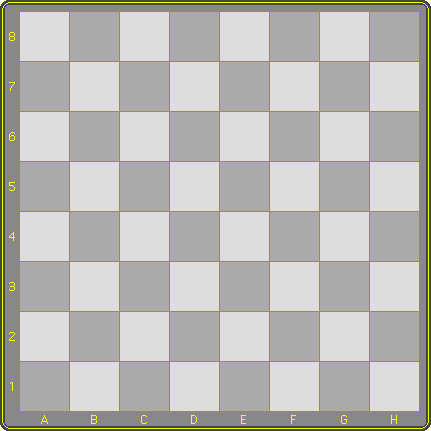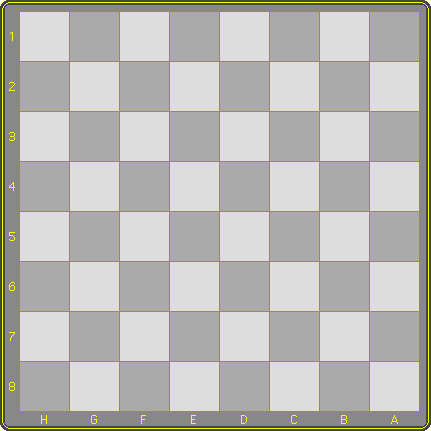Page 1 of 25
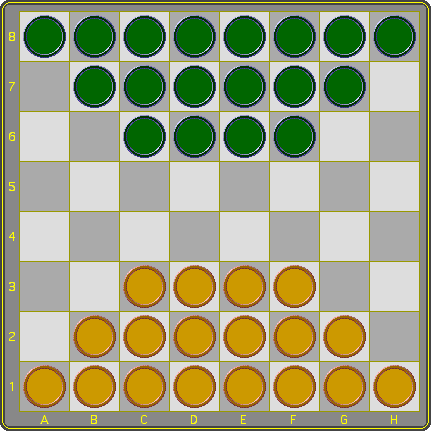 |
The springboard: Croda Rules Strategy - terra incognita |
Dameo is the most important candidate to prevent draughts from becoming a marginalized affair, away from the international sports arena and deprived of the public attention that used to befall its heroes in the past.
Modifying the current game in all likelihood won't happen because some suggestions fail to solve the problem while others fail to even address the problem. Tinkering with points awarded for drawn positions based on their material for instance - the petit bourgeois mentality of it is nauseating and unworthy of Draughts.
The one decent suggestion, introducing the Thai king, or a modified version thereof as in Killer Draughts, probably will fall short because it suggests it's still the same game. But it would send half the accumulated theory down the drain.
For those who care to look beyond appearances, Dameo isn't all that different from International Draughts, and it adresses the problems fundamentally. It does so first and foremost because Croda did so.
The springboard: Croda
Croda was invented by the Croatian mathematics professor and Draughts master, the late Ljuban Dedić (1956-2010). He was a nine times national champion of Yugoslavia so we're not exaggerating if we say that he was familiar with Draughts. In order to create a draughts game with a smaller margin of draws he replaced the sideways move of a man in Turkish Draughts by a diagonally forward move, filled the vacant back rank of the latter, and put the resulting mechanics in the framework of rules of International Draughts. That's all.
It results in some obvious differences with Draughts:
- Combinations align with the board, so there's more room for them.
- The game becomes a doublegrid game in which a man simply moves forwards.
Ljuban Dediç was reluctant to go beyond the necessary. Turning square, but having men move diagonally forwards instead of sideways, was a necessary condition, but he did't extend the diagonal move to kings. Kings move and capture long and straight, and apart from not capturing like a vacuum cleaner, they are identical to Turkisk kings. In Turkish, two kings can capture a lone one, but finding out how is not entirely trivial. Less trivial indeed than winning the same endgame in Dameo, where kings may move diagonally because men may move diagonally. It depends on how you look at it, and keeping the changes minimal while preserving the more interesting 2x1 kings endgame must have appealed to Ljuban. He did fully succeed in his mission was to make a square game as close to International Draughts as possible, but without the inherent flaw. Croda got less appreciation than it deserves, yet more than was to be expected. Draughts being in such dire straits, some players are secretly considering alternatives.
Croda was Dameo's springboard. Christian Freeling, co-author of this essay, learned about the game through Leo Springer in 2000. It didn't take him long to realize that it fitted an idea that had been gathering dust for more than fifteen years, in fact even since the invention of Bushka. That idea was linear movement in a Draughts game. The idea had never materialized because introducing linear movement in International Draughts would lead to gridlock in the opening, so he felt there wasn't any point in even trying.
To prevent gridlock, linear movement requires a doublegrid game. But that notion came later. In 2000 the singlegrid versus doublegrid distinction wasn't all that explicitly considered yet, let alone in the early eighties.
To make a short story shorter: Dameo was invented in the two minutes that followed Croda's encounter with linear movement. Just apply and truncate the rectangular forces to a trapezium. It not just looks better, it forces players to make some strategic decisions early on because progress along the sides, still tempting and much sought after, must do with less abundant resources than in Croda.
Rules
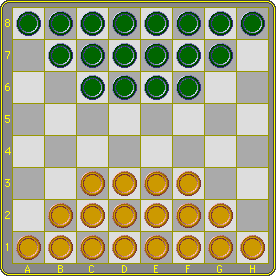 | Here is the board with the pieces in the initial position. The rules mention men and kings. A king is a promoted man. If the difference doesn't matter, they may also mention pieces, for instance 'the number of pieces on the board'. Linear movement Linear movement is defined as the move of a straight unbroken line of men of the same color, one square forwards, straight or diagonally, along the line of squares they occupy, provided the square in front is vacant. It includes the move of a single man, which may be considered as a line-of-one. Linear movement does not apply to kings. Object The object is to leave your opponent without a valid move, either by capturing all his pieces, or by blocking them completely. Draws may occur by mutual agreement or three-fold repetition of moves. |
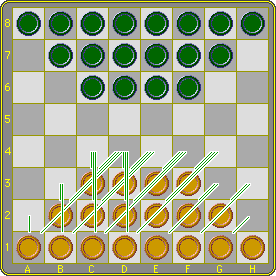 | 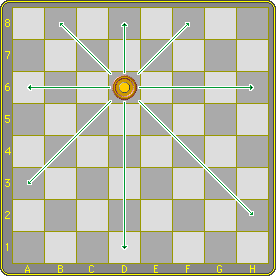 | Movement A man or a line of men moves one square forward to a vacant square in front. A king moves like the Queen in Chess. |
In Dameo one can open with any man. On the left are 26 unique opening moves white has at his disposal. For each of these there's a symmetric one.
Black, on his first move, doesn't face a symmetric situation, so he actually has a choice of 52 answers. Thus after two moves, 1352 different positions are possible.
If a man moves onto the opponent's back row, it is promoted to king. If a linear move reaches the back row, only the head man is promoted.
Capture
Capture takes precedence over a non-capturing move. Only if the player to move has no capture to make, may he move a single man, or a line of men, or a king.
- Although pieces may move diagonally, all captures are straight only. Men may capture forwards, backwards and sideways by the short leap.
Kings may move queenwise, but they capture only rookwise, by the long leap. - Capturing, whether by men or kings, is compulsory.
If a piece makes a capture and is now in a position to make another one, it must do so. Thus multiple captures may be made in the same turn. When a multiple capture is being made, the captured pieces are only removed at the end of the turn, and it is not allowed to jump over the same piece twice in that turn, although vacant squares may be passed over more than once. - Majority capture takes precedence: if a player has a choice of captures, he must choose the one that results in the largest number of pieces being captured (kings and men counting equally). When a king has more than one option in terms of captures and destination squares, it must choose its route so that it maximizes the capturing sequence. If there is more than one way to do this, it is free to choose.
- If a man ends its move on the opponent's back row, it is promoted to king. A man passing the back row in a capture, but not ending on it, is not promoted.
| Since a capturing sequence must be completed before the pieces are taken off the board, and since a man may not be jumped twice, Dameo allows for the 'Coup Turc'. White moves 1.c1e3 (ac5x), 2.e1c3 and the black king must capture four men, ending on d3 where he is stopped by the already captured man on c3, while d2 is still covered by the already captured man on d1. | ||||||
Strategy - terra incognita
Because of the absence of one-on-one opposition, Dameo strategy is more about pace/breakthrough than about tempo/opposition. In Dameo differences in pace derive from two sources: linear movement and captures.
Tactics are easy to illustrate, but strategy is far more elusive. In Draughts one can afford a substantial arrears in pace on grounds of tempoconditions. In Hexdame one cannot. In Dameo flexibility in pace is considerable, but how best to use the possibilities to speed up or slow down is still an open question that only can be approached after many documented games. Here are a few useful tips for beginners:
- As all draughts variants with straight forward movement, Dameo encourages a build-up of forces along the sides, but the means to do so are limited by its initial position. This requires that they be used efficiently.
- From a white point of view, the 'kingtraps' a1-c1 and h1-f1 should not be given up unnecessarily, though keeping both intact for defensive reasons throughout the middle game may imply you will eventually actually need them both.
- Advance where you have more checkers locally. Keep back where not.
- In the middle game, a roller on the edge should consist of at least three men.
- Keep advancing men connected as much as possible. Defensive men may be very effective even if isolated.
- Beware of funny tactics.
This all goes a long way in stating the obvious. Playing this game is like exploring a new continent where all but the very first steps are uncharted. Strategy, in consequence, for the time being requires an intuitive approach.

